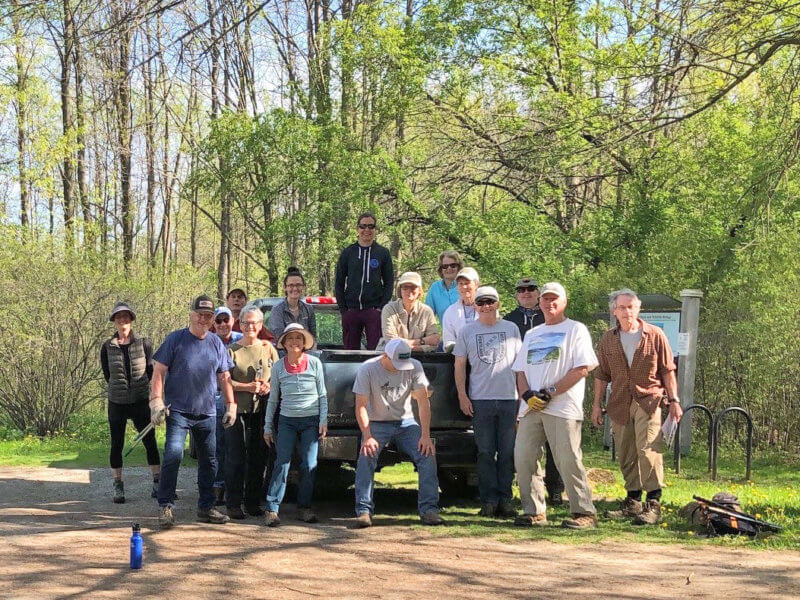Ensuring the success of the Charlotte Park and Wildlife Refuge
For Jessie Bradley, joining the Charlotte Park and Wildlife Refuge Oversight Committee was a logical choice.
“I’ve been involved since the late 1990s,” she said, “back when the Demeter Fund was proposing to give the town the land.”
Initially, members were chosen to represent different interests on the committee and, as a 25-year veteran of the Recreation Committee, Bradley represented their interests. Last year she was elected co-chair of the Oversight Committee, serving beside Susan Smith.

When asked to pinpoint achievements of the board, Bradley notes that most of their tasks are ongoing ones.
“We’re very involved in invasive species removal,” she said, “and that’s a never-ending battle.”
Among the invasives present in the park are buckthorn, honeysuckle, knotweed and poison parsnip. Bradley is thankful there isn’t much of the latter.
“We have a very small budget,” she said, “so we maximize volunteer effort.”
The park hires out for some jobs like brush-hogging and building new bog bridges.
Bradley notes that with bicycles and dogs prohibited from the park, most of the people who visit just enjoy walking on the trails.
“During COVID it was insane, but it’s gone down a bit,” she said.
After the Trails Committee had the park’s trails added to the Trail Finder website, there was also increased traffic.
“This is a low-impact area,” Bradley said, “but you’re always happy when people are out in nature.”
One of the goals of the park is managing for bird habitat. The committee works with the farmer who leases the agricultural portion of the property, and he has agreed to delay mowing to give the bobolinks and savannah sparrows time to raise their chicks.
Bradley said the park is an amazing birding destination.
“I call myself a B-grade birder because I know a lot, but I’m hardly an expert,” she said. “We have turkeys, crows, hawks, owls, bobolinks, sparrows, warblers and more.”
The committee is working on a grant request to Cornell University for bird habitat management with help from Audubon.
“We’re a connector property,” Bradley said. “I hope they’ll consider us a good investment. We’re frugal, but we could use more money.”
Park wildlife includes a family of beavers that have moved upstream on the property.
“Moving upstream is what we wanted them to do,” Bradley said. “It’s exciting to see how the landscape changes with them.”
The park protects some key trees from the beavers, particularly the oaks which the beavers are unable to fell, even after killing them by gnawing on them.
Bradley used to run Charlotte Flower Farm but discovered that she didn’t like to cut flowers, so she gave up the business. She works as a garden designer but has recently cut back a bit on her landscaping work.
“I no longer have employees,” she said. “I do consulting, and I get the plans going.”
Bradley won’t turn work away but she’s no longer actively looking for new clients, particularly those outside Charlotte. Her work ranges from vegetable and flower gardens to working around swimming pools or other man-made elements.
“We’re all passionate about the wildlife refuge,” Bradley said of the nine-person committee. “Everybody does what they can.”
Bradley is particularly excited that the committee is doing more community outreach, pointing to a snowshoe walk with the library, a field trip with third graders from Charlotte Central School and a collaboration with the Charlotte Land Trust to promote conserved land. She’s hoping there will be more outreach with other groups in the future.
Bradley notes that the Charlotte Park and Wildlife Refuge is an interesting combination of habitats.
“The original inspiration was the incredible view corridor for drivers going down Route 7,” she said. “It’s an incredible piece of property because it’s multi-use. We’ve got active agriculture, a wildlife refuge and recreation. Balancing those things and showing that a piece of land can be used that way is incredibly important.”

